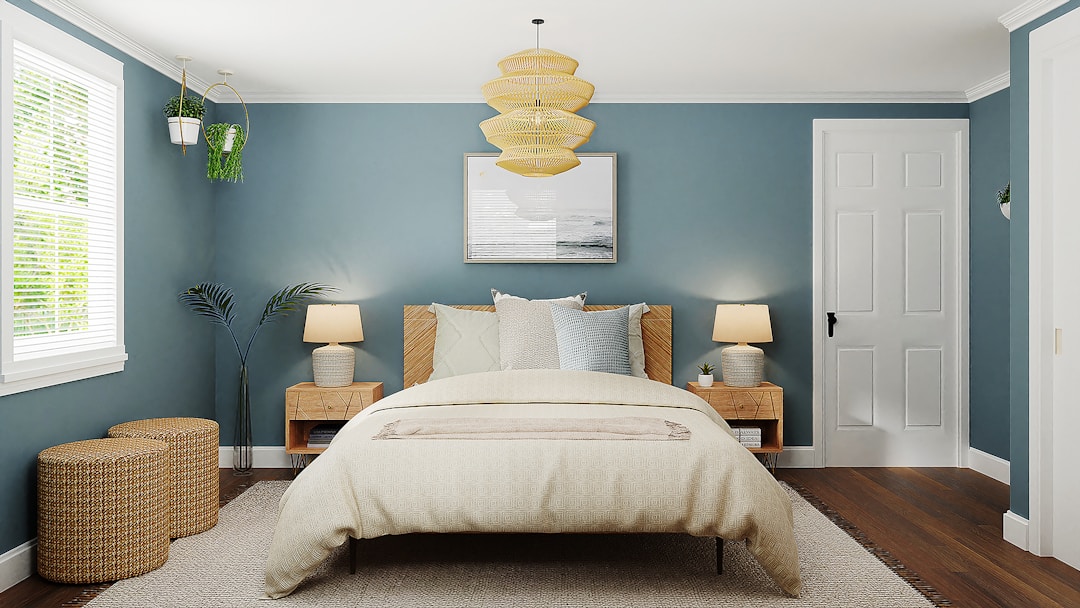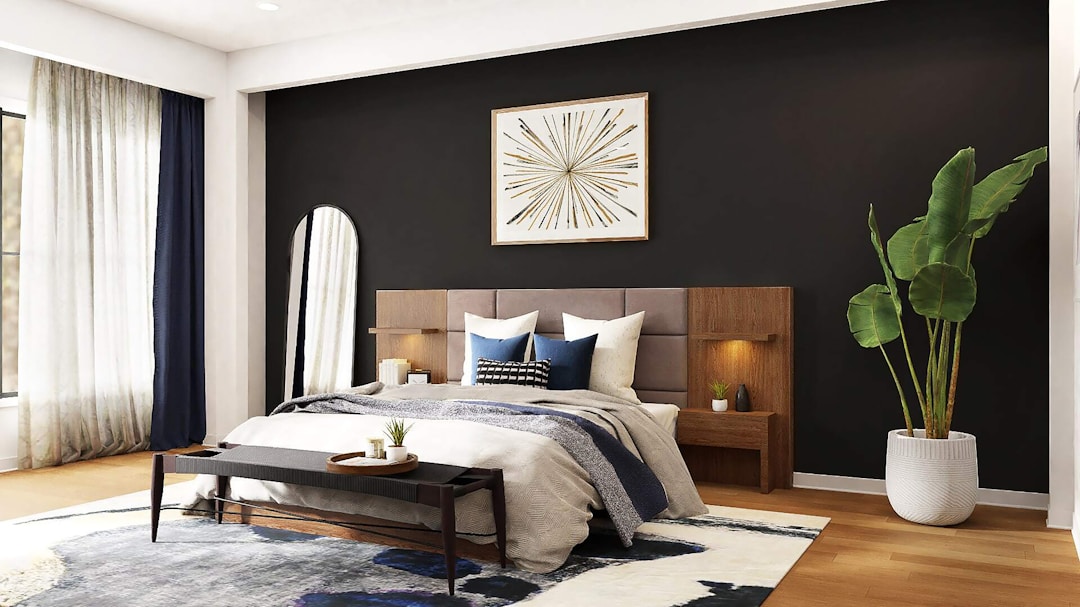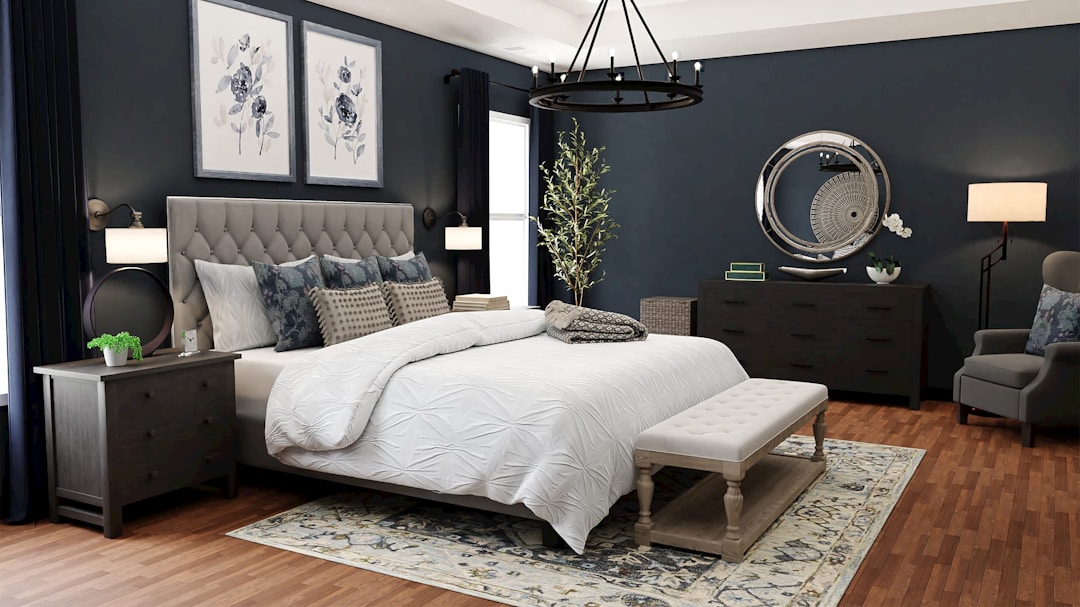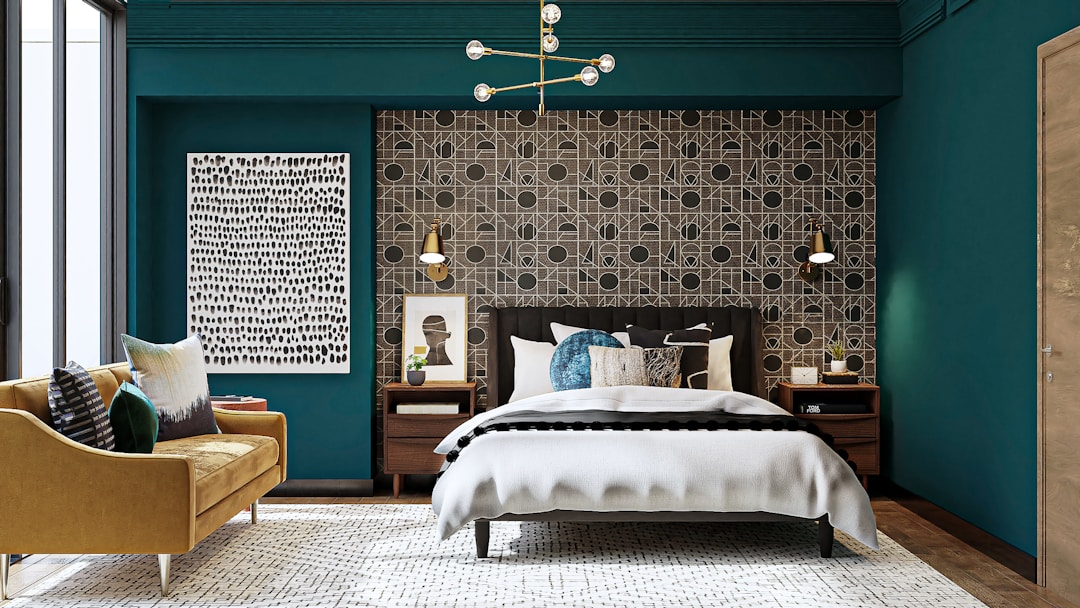The bedroom is often a sacred space, a place where we can express our true selves without inhibition. It’s a canvas where our personality, taste, and creativity can shine through. Having a well-designed bedroom theme not only improves the aesthetics of your room but also impacts your mood, productivity, and well-being. Create a personal haven—you deserve it! Below, we’ll cover several tips on how to fuse your creativity and personality into a one-of-a-kind space that is uniquely yours.
In this article
The Palette: Choosing the Right Color

The color scheme is crucial in setting the bedroom’s mood. Each shade evokes a different feeling; blues instill calm and serenity, yellows elicit happiness and energy, and greens are soothing and refreshing. Deep, saturated colors can make a spacious room feel more intimate, while lighter shades can make a small room appear larger. However, choosing the perfect color for your bedroom is not just about the rules of color theory; it’s about how you associate each hue with your personal experiences or what resonates deeply with you.
Once you have a primary color, consider shades, tones, or tints for a monochromatic scheme or complementary colors for more contrast. You might also choose to have color pops—a vibrant art piece, a brightly colored rug, or quirky cushions—against a neutral palette. Check out striped linen sheets for versatile and playful options. Linen itself is a luxurious and breathable fabric, known for its durability and natural cooling properties. When combined with stripes, this creates a visually stimulating design that can instantly transform the look and feel of your bedroom.
Let’s not forget the influence of natural light, which variably alters the perception of colors. Paint swatches on your walls and observe how they morph under different times of the day and lighting conditions. In this manner, you can be more certain of your choice before committing fully to a particular paint color. When purchasing sheets or accessories, make sure you shop at a quality retailer that has a wide selection of home decor.
Texture Play: Understanding the Impact of Materials
The blend of differing textures adds depth and dimensions to your space. Combine various materials like metal, wood, fabric, and stone to curate an engaging and aesthetic room. Soft, plush materials can be comforting in a bedroom, but juxtaposing these with something rough or rustic provides a balance. A plush rug on a hardwood floor, velvet or linen against a brick or concrete wall, or glossy metallic knobs on a weathered wooden drawer are some examples of how contrasts can enrich your decor.
Consider materials that please your sight and your touch—think a pile of cushy pillows, a soft cashmere throw, or a cool leather ottoman. Textural variety is not just visually pleasing but also encourages interactions with the design elements. As you engage with the different textures—seeing, touching, feeling—you personalize your experience with your room. Your space becomes more than just an aesthetically pleasing environment; it evolves into a tactile haven.
Adding patterns into the mix is another dimension to consider. Stripes, polka dots, botanical prints, geometric shapes, or even a creative mix of all can provide a lively dynamic to your room. Balance busier patterns with solid colors or simpler patterns to avoid overpowering the sensory experience.
Let There Be Light: Personalizing the Ambience

Lighting enormously affects the perception of space and color. We can separate light sources into three types—ambient (overall light), task (specific light), and accent (highlighter light). The dynamic of direct and indirect light influences the atmosphere of the room. Direct light for reading, subdued, gentle lighting for relaxation, or a dramatic spotlight to emphasize a painting or photograph can create different moods and functionality.
The type of fixtures also contributes to the room’s character. Ceiling fixtures, wall sconces, floor lamps, table lamps, candles, fairy lights, or a combination of these provide endless possibilities for creative lighting solutions. Consider the fixture’s design, size, color, and light bulb type (LED, incandescent, or halogen) and color temperature (warm or cool). LED lights are a fantastic choice since they can even save you money.
Artistic Expression: Choosing the Perfect Art for Your Room
Artwork helps express your individuality and adds a dash of your personality to your room. Art does not limit itself to paintings or photographs. Textiles, sculptures, even your favorite collections—anything that pleases your heart qualifies as art. Even the way you arrange your books, records, or plants can have an artistic flair. When choosing art, don’t get caught up in matching the artwork with your room’s color scheme or style.
Choose something that you connect with emotionally, that stirs up feelings of joy, inspiration, serenity, or any positive response. If you resonate with a piece, it will naturally harmonize with your space. Also, consider the size and placement. Big, bold pieces work well as focal points against a plain wall, above your bed, or across from your bed. Smaller pieces can go anywhere—clustered on a wall, on a ledge, on your bedside table, or even in your bathroom! It’s truly about your preference.
Final Touches: Adding Personal Elements

The personal elements in your room are often the secret ingredients that transform a ‘well-decorated’ room into ‘your room’. They can be anything that holds meaning to you—a collection of books or vinyl records, your travel souvenirs, family photos, candles with your favorite scent, the rug you purchased from your trip to Morocco, a special piece of jewelry, or even your skateboard.
Try organizing these personal elements in a manner that they become a part of your decor. Make your favorite books a part of your nightstand decor, frame your travel pictures in diverse frames and hang them as a collage, or display your hobby-related items creatively. These personal elements evoke memories and reflections of your journey—your passions, where you’ve been, where you want to go, and who you are as a person. They instill a sense of familiarity and align your space with your vibes.
Creating a Space That Grows With You

When designing your bedroom, create a space that grows with you. One key aspect to consider is flexibility. As you go through different stages in life, your needs and preferences may change. For example, if you’re currently a student, your bedroom might need to function as a study area as well as a place to sleep. In this case, incorporate a desk and ample storage for books and supplies. However, as you transition into the working world, you might want to transform your bedroom into a more serene and relaxing space.
Don’t forget about functionality. You need to have a bedroom that looks beautiful and serves its purpose in practical ways. Incorporate ample storage solutions, such as built-in wardrobes or under-bed storage, to keep your space organized and clutter-free. In essence, when designing your bedroom, think about the long term. Create a space that can easily adapt to your ever-changing needs and tastes. By incorporating flexibility, timeless design, and practical functionality, you can create a bedroom that grows with you and provides a haven of relaxation for years to come.
As this article clearly illustrates, creating a unique bedroom theme is all about harmonizing your internal and external spaces. It requires a deeper understanding of yourself and a willingness to express it openly and creatively. The process might involve some trial and error, but remember—the journey is just as important as the destination. Enjoy the creative process and create a personal sanctuary that speaks of you and only you. Follow our tips and you’ll be well on your way to designing the bedroom of your dreams.


